Agricultural Engineering
Agricultural engineering is one of the engineering disciplines that applies engineering science and technology for agricultural production and processing, enhanced land used patterns and management for land and other natural resources. Agricultural engineering involves the disciplines of animal biology, plant biology, and engineering principles like civil, mechanical and chemical with the knowledge of agricultural principles. In fact, it is a broader scope of engineering than any other engineering discipline. It also utilizes the knowledge of mechanical engineering for designing agricultural machineries.
In Phek District, Nagaland, cultivations are practised in the form of shifting manner in the hill slopes by jhuming (burning the grass and trees). The main staple crops like rice, maize etc are planted on terraces. Terraces are designed in high slope even nearly of 1% slope are found. There has been the practice of water harvesting by excavating small earth ponds in the paddy field.
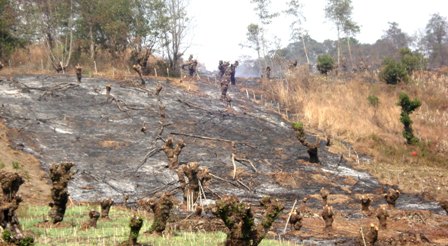

Farm operations like ploughing to harvesting are done with local farm tools like DAO ,Spade etc. People are less aware of the improved implements for various farm operations. Some part of the district like Kikruma Village use power tiller as a main implement for ploughing. It can be mentioned here that Kikruma village is one of the world known village for their indigenous approach of integrated three tier farming system , ZABO system which was found to be very scientific.
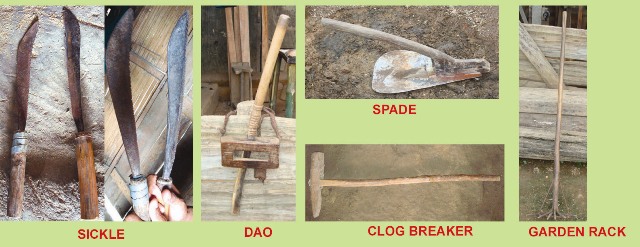
Water application for crops i.e. irrigation are naturally rainfed as a whole. Therefore, one time cropping is predominant in this area. Bamboos are used for water diversion and conveyance from higher slope to lower cultivated area. The district has a very high potential for water conservation and its economical use for cultivation with the application for micro irrigation kits. And another advantage for its high slope is that micro irrigation pressure can be achieved by placing the water source tank in the higher elevation and cultivation can be done at the lower end. Water harvesting ponds are found in few pockets of the district. Seepage of water being the main problem, storage of water during dry season becomes extremely difficult.
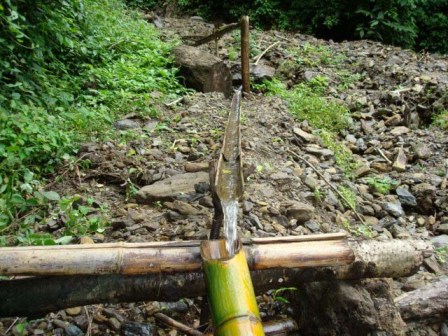
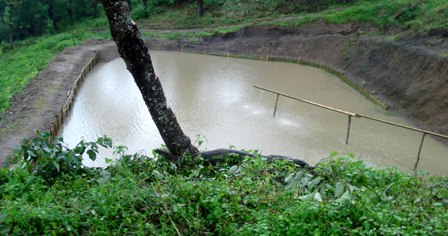
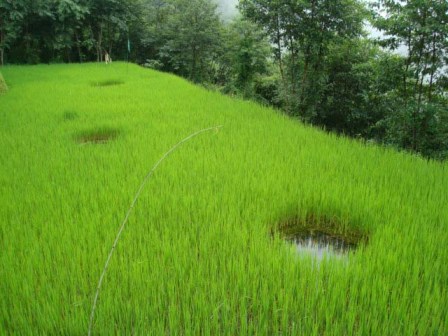
Post harvest management for storage of grains and pulses are practiced traditionally in locally made bamboo mat bin and one side hollow wooden plank. Paddy is the main crop and traditionally after harvesting of paddy, it is dried and kept in a Local bamboo storage bin, one end sealed hollow wooden storage bin and gunny bags. Local Bamboo storage bins are made up of bamboo mat weaved cylindrical and conical opening on the top with a separate cover as shown Wooden structure is made from and thick wooden trunk with a diameter of 3-4 ft and a length of 1-1.5 m . The inner part trunk is chipped out leaving the circumferential thickness of 2-3 inch and 3-4 inch at the bottom and the cover for the same is also made from wood. Gunny bags are also used as storage normally by those farmers who do not have other storage structures. Usually gunny bag is used and kept one over the other.
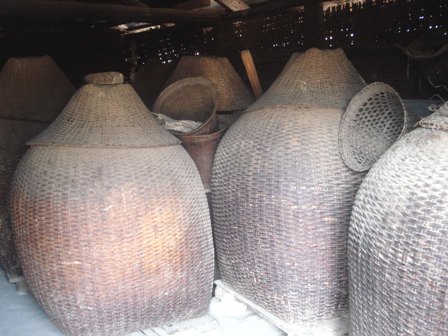
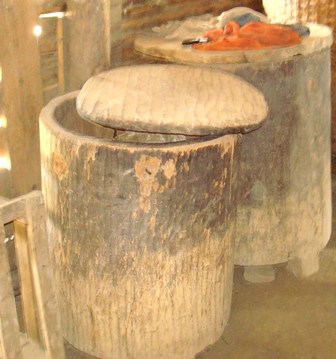
Maize is another main crop of the place. Traditionally after harvesting, they are kept above the kitchen for smoking from the fire place.

| Sl.No. | Trust Area Identified |
| 1. | Proper design of terrace, water harvesting and diversion, irrigation and drainage system for proper management of watershed area |
| 2 | Introduction of improved storage structure for cereals and pulses |
| 3 | Introduction of improved farm implements and tools for farm mechanization |
| 4 | Introduction of different Soil and water conservation method |